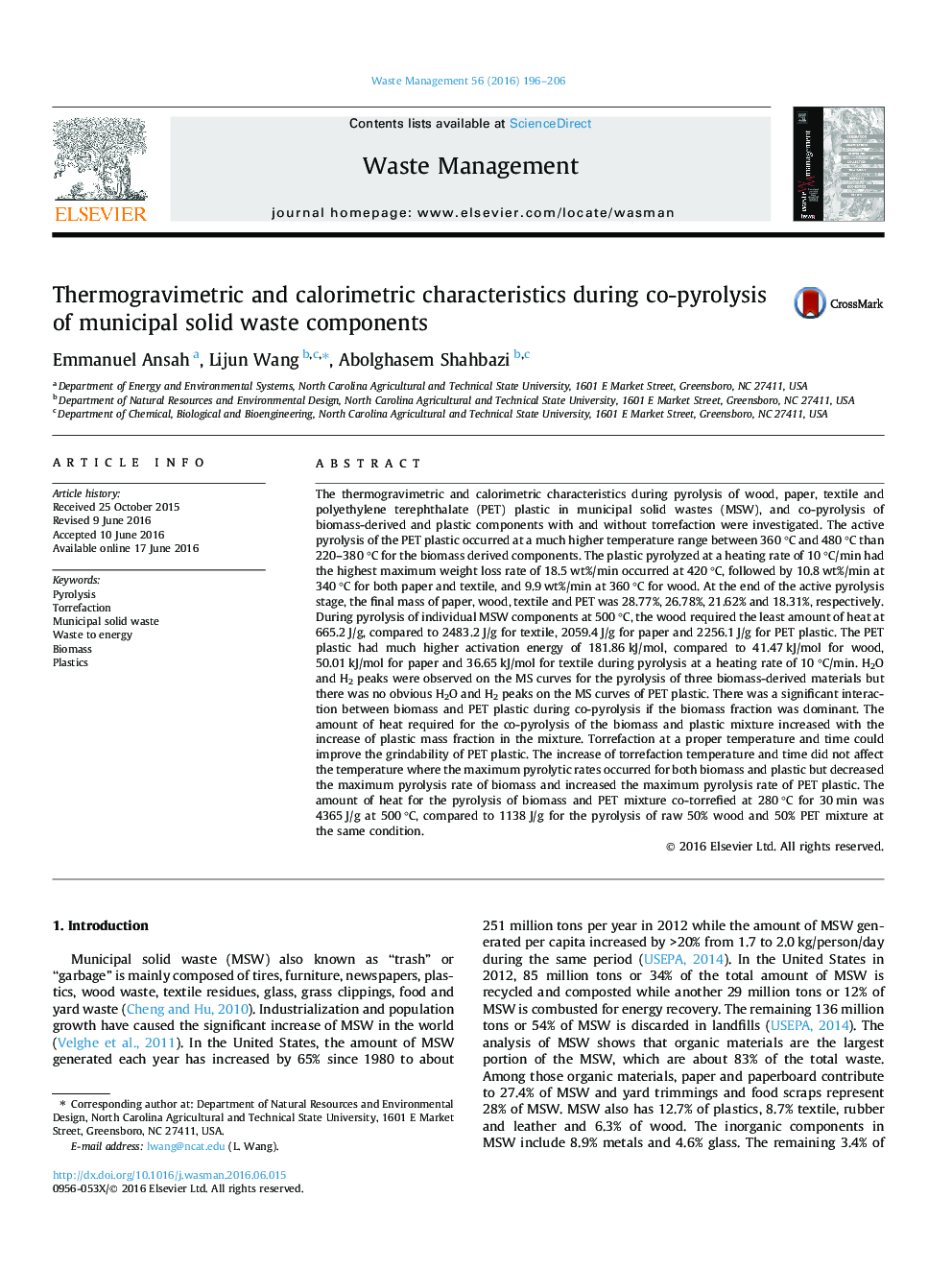| کد مقاله | کد نشریه | سال انتشار | مقاله انگلیسی | نسخه تمام متن |
|---|---|---|---|---|
| 4471129 | 1622630 | 2016 | 11 صفحه PDF | دانلود رایگان |
• PET plastic pyrolysis occurred at 360–480 °C higher than 220–380 °C for biomass.
• Heat for wood pyrolysis at 500 °C was 665 J/g vs 2256 J/g (PET) & 2059 J/g (paper).
• H2O peak was observed on MS curve for biomass pyrolysis but not for PET pyrolysis.
• Interaction occurred in co-pyrolysis of biomass and PET mixture with more biomass.
• Torrrefaction increased PET grindability, interaction and heat need in co-pyrolysis.
The thermogravimetric and calorimetric characteristics during pyrolysis of wood, paper, textile and polyethylene terephthalate (PET) plastic in municipal solid wastes (MSW), and co-pyrolysis of biomass-derived and plastic components with and without torrefaction were investigated. The active pyrolysis of the PET plastic occurred at a much higher temperature range between 360 °C and 480 °C than 220–380 °C for the biomass derived components. The plastic pyrolyzed at a heating rate of 10 °C/min had the highest maximum weight loss rate of 18.5 wt%/min occurred at 420 °C, followed by 10.8 wt%/min at 340 °C for both paper and textile, and 9.9 wt%/min at 360 °C for wood. At the end of the active pyrolysis stage, the final mass of paper, wood, textile and PET was 28.77%, 26.78%, 21.62% and 18.31%, respectively. During pyrolysis of individual MSW components at 500 °C, the wood required the least amount of heat at 665.2 J/g, compared to 2483.2 J/g for textile, 2059.4 J/g for paper and 2256.1 J/g for PET plastic. The PET plastic had much higher activation energy of 181.86 kJ/mol, compared to 41.47 kJ/mol for wood, 50.01 kJ/mol for paper and 36.65 kJ/mol for textile during pyrolysis at a heating rate of 10 °C/min. H2O and H2 peaks were observed on the MS curves for the pyrolysis of three biomass-derived materials but there was no obvious H2O and H2 peaks on the MS curves of PET plastic. There was a significant interaction between biomass and PET plastic during co-pyrolysis if the biomass fraction was dominant. The amount of heat required for the co-pyrolysis of the biomass and plastic mixture increased with the increase of plastic mass fraction in the mixture. Torrefaction at a proper temperature and time could improve the grindability of PET plastic. The increase of torrefaction temperature and time did not affect the temperature where the maximum pyrolytic rates occurred for both biomass and plastic but decreased the maximum pyrolysis rate of biomass and increased the maximum pyrolysis rate of PET plastic. The amount of heat for the pyrolysis of biomass and PET mixture co-torrefied at 280 °C for 30 min was 4365 J/g at 500 °C, compared to 1138 J/g for the pyrolysis of raw 50% wood and 50% PET mixture at the same condition.
Journal: Waste Management - Volume 56, October 2016, Pages 196–206
